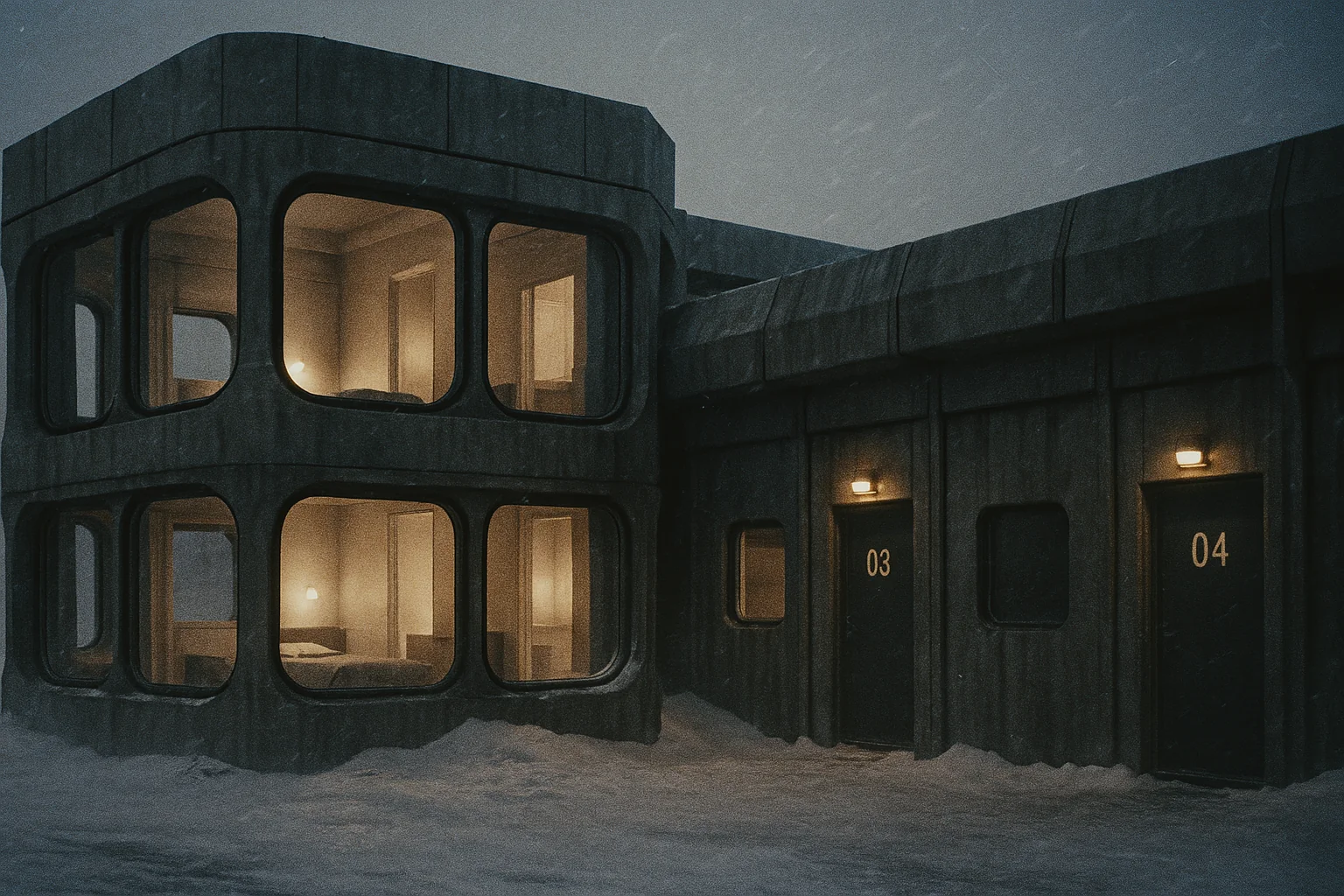
A Few people conjuring up the 'most comfortable dwelling place imaginable' are likely to picture a wooden shelter on an island off the coldest continent on Earth. But that's how Antarctic explorer Robert Falcon Scott described the hut at Cape Evans on Ross Island that was the base for his 1910-13 expedition. The hut is nestled below a small hill on a long stretch of black sand. In 2011, it looked like a building site, but now, seals lie on the ice in front of the newly restored structure and sun reflects off the cliffs of the nearby glacier.
B The New Zealand Antarctic Heritage Trust (NZAHT) and its team of conservation workers recently announced the completion of 10 years of intensive work to save three historic buildings on Ross Island. As well as the hut at Cape Evans, it has worked on the Discovery Hut from Scott's 1901-04 expedition at Hut Point, and the hut at Cape Royds, built for Ernest Shackleton's 1907-09 expedition. When work began, many of the artefacts were temporarily removed while carpenters from the team of conservation workers repaired the walls, floors and roof. Of particular interest is the small workbench and array of test tubes, sample jars and Bunsen burner stands of biologist Edward Nelson, lit by sunshine through a dusty window. This was where the young scientist preserved marine specimens as part of his search for new species and an understanding of the Antarctic food chain. In Scott's 'zone of command' was the table where team member Edward Wilson made his enduring biological and botanical illustrations.
C The NZAHT executive director Nigel Watson describes the three restored huts as 'fantastic remnants of humans' first contact with the continent'. The idea for the birth of the conservation project, he says, 'was the fact that we were in great danger of losing them'. When the on-site work began in 2004, snow and ice were building up around, under and sometimes inside the huts, damaging the structures and threatening their contents. 'We now have three buildings that are structurally sound and watertight with a very different feel - they are drier and lighter and the humidity is reduced. It's a much better environment for the collection.'
D As well as heritage carpenters, the NZAHT team on Ross Island has included experts in textile, paper and metal conservation: in total, 62 experts from 11 countries have visited Antarctica to work on the project, often spending a whole summer on-site, sleeping in tents and popping 25km back to Scott Base for the occasional shower. 'It became known as the most exciting conservation project in the world,' says Watson, 'so it attracted top heritage conservation talent.'
E Some of the most exciting discoveries were three intact crates of 'Mackinlay's Rare Old Highland Malt Whisky' found encased in ice beneath Shackleton's hut, a paper notebook that belonged to surgeon, zoologist and photographer George Murray Levick found buried in dirt at Cape Evans and a small box of 22 cellulose nitrate negatives waiting to be developed into photographs found in Herbert Ponting's darkroom. But most of the 18,202 items catalogued and conserved are more mundane: food, tools, clothing and other personal items that were not precious enough to be taken home on the return voyages.
F The NZAHT team's conservation treatments involved thorough cleaning, followed by chemical treatment to help slow, or even reverse, the deterioration. Metal items would go through corrosion removal, followed by a chemical stabilisation treatment, then application of an oxygen and moisture barrier to prevent further corrosion. Treatment of paper items often involved washing to remove harmful acids and salts and to help reinforce the fibres so that in some cases the paper was even stronger than before.
G As a result of the project, the NZAHT has become the world leader in cold-climate heritage conservation and its members have been interviewed for numerous television documentaries and radio reports. The Ross Island huts are the 'jewels in the crown', says Watson, but there are other historic buildings needing attention. With logistics support from Antarctica New Zealand, programme managers Al Fastier and Lizzie Meek will be part of a small team heading to Cape Adare, an exposed site more than 700km north of Scott Base. The two Cape Adare huts, remnants of an 1898–1900 British expedition, 'are not only the first buildings on the continent', says Watson, but also 'the only example of humanity's first buildings on any continent on Earth'.
H The three-year restoration effort will involve construction repairs and the removal, conservation and return of about 1100 objects. Compared with the hut sites on Ross Island, which are relatively sheltered, Cape Adare is 'a very remote and challenging place to work in', says Watson. It's set among the world's biggest colony of Adélie penguins on an exposed spit of land, and it is important that they don't interrupt the functioning of the colony in any way while they are there. Lizzie Meek looks forward to the challenge. 'But I'm also looking forward to going back to the Ross Island huts and seeing them with fresh eyes. After so many years of working on them, to be able to step inside and look around to see what we have accomplished will be amazing.'
I If you can find your way to Antarctica, you'll need a permit to visit any of these huts, which are each in an Antarctic Specially Protected Area. But there's an easier way to see them without making the long journey: the trust has partnered with Google to offer Street View walkthroughs of each of the dwellings, available via Google Earth or through the NZAHT's website.